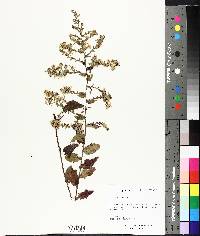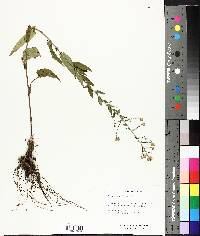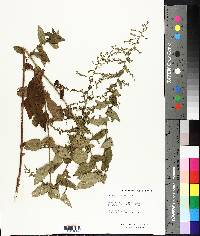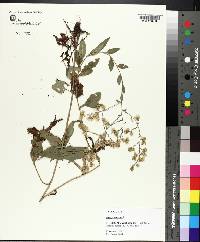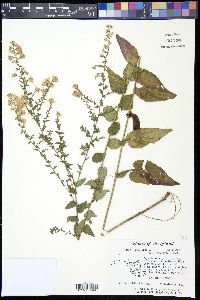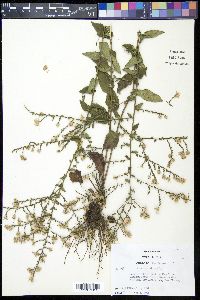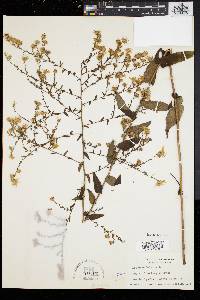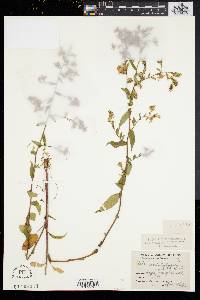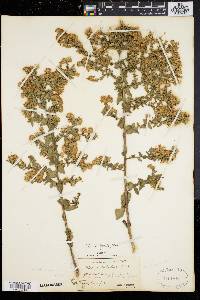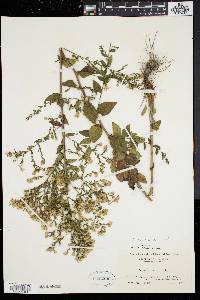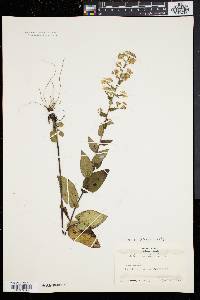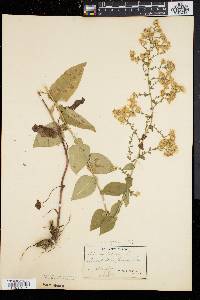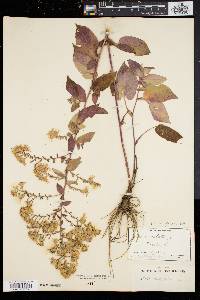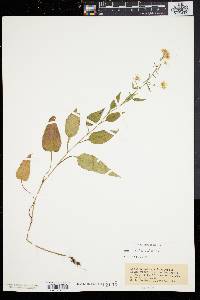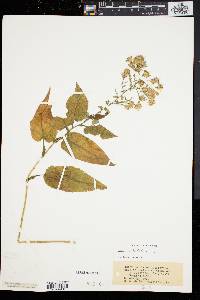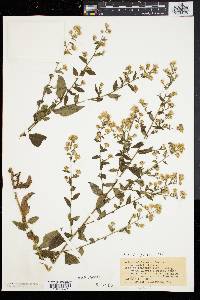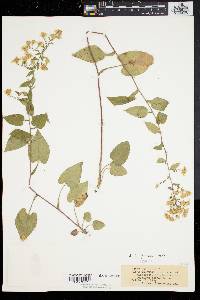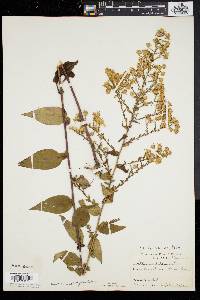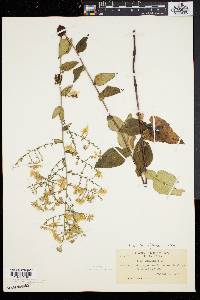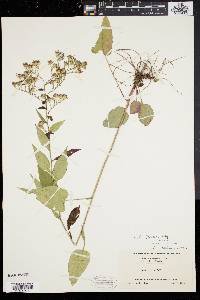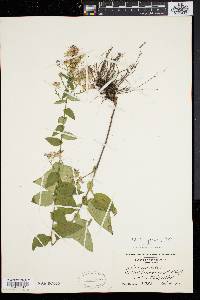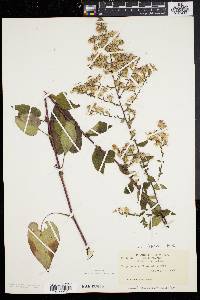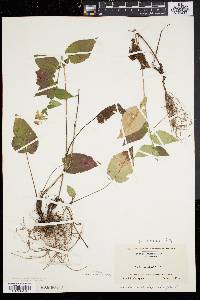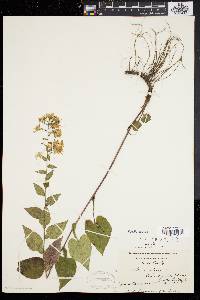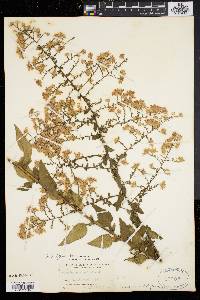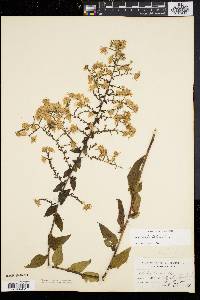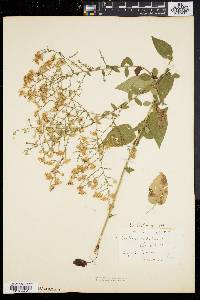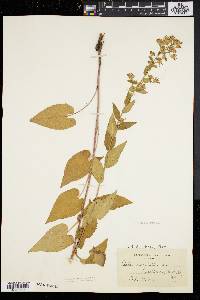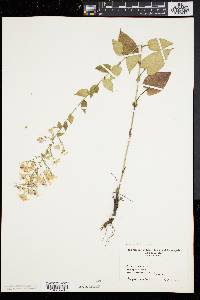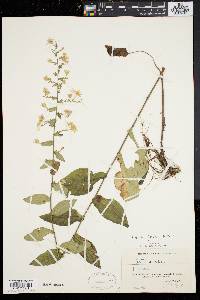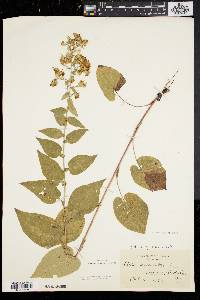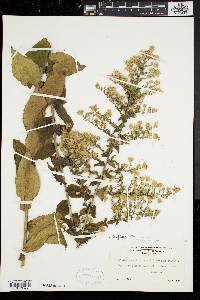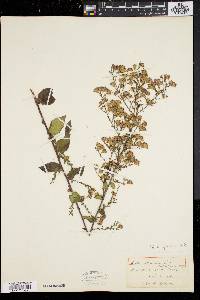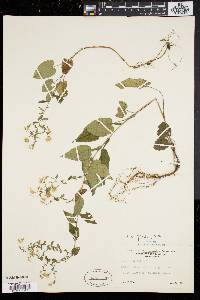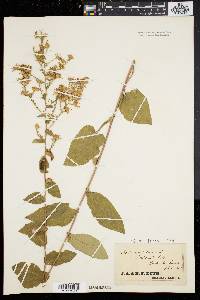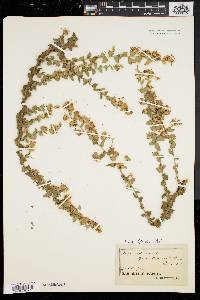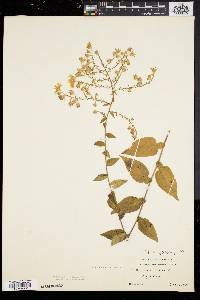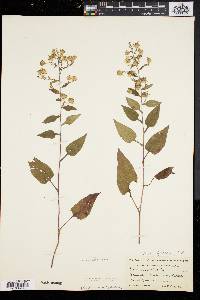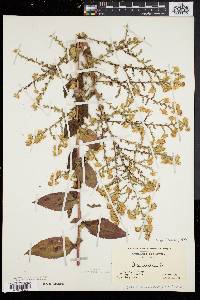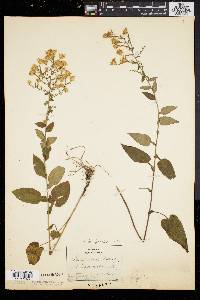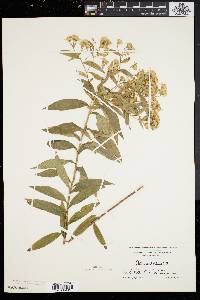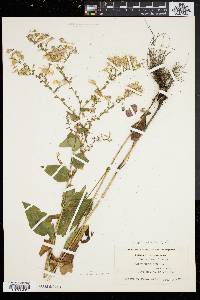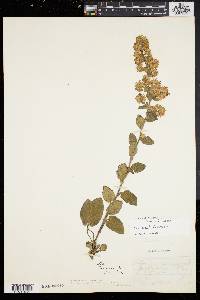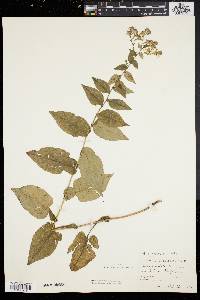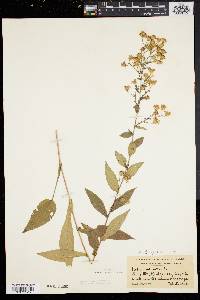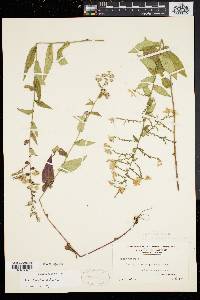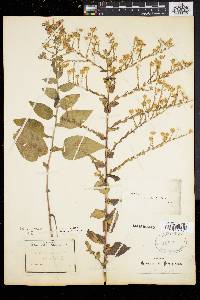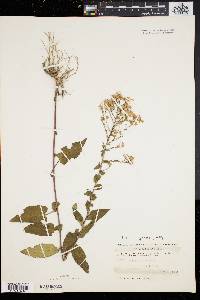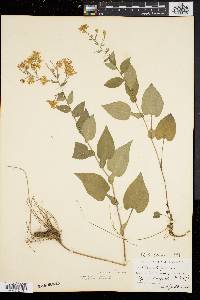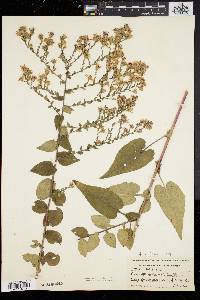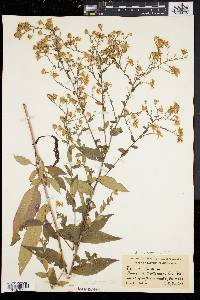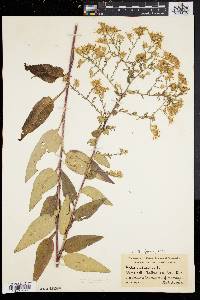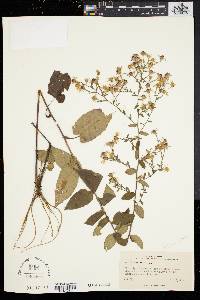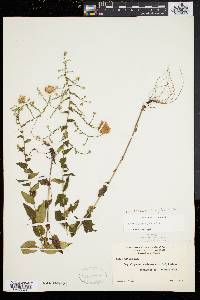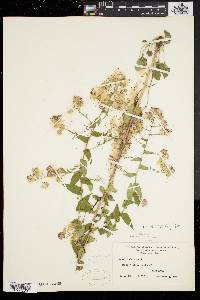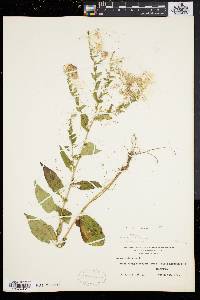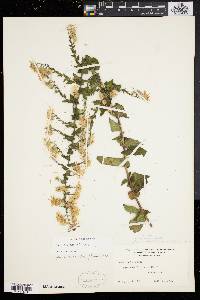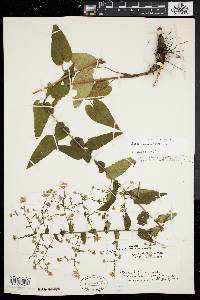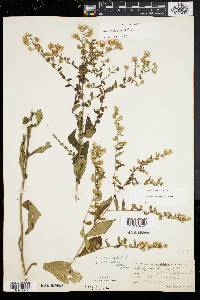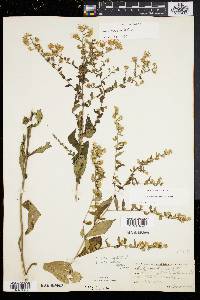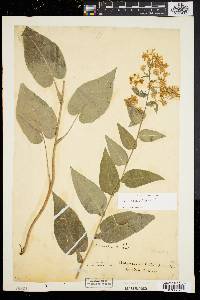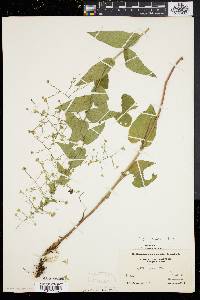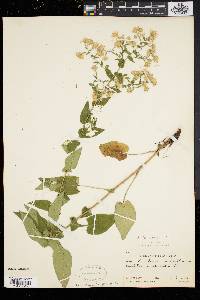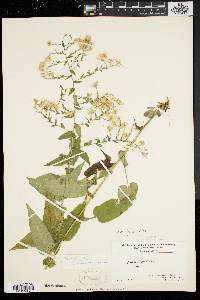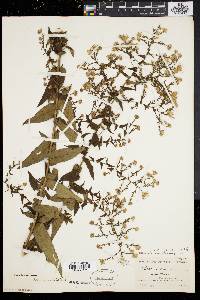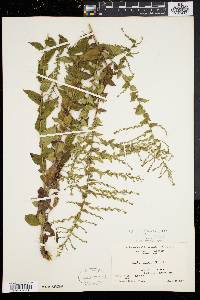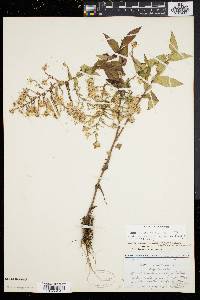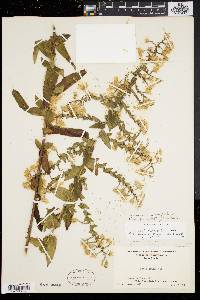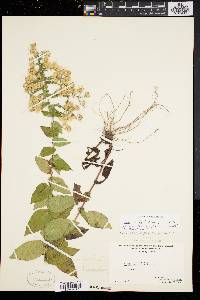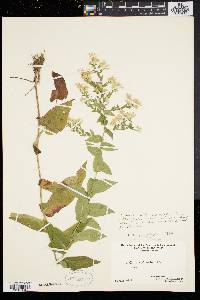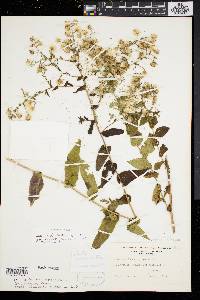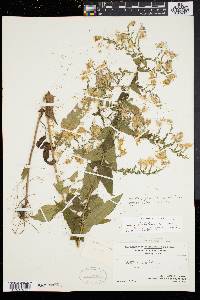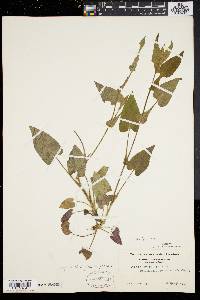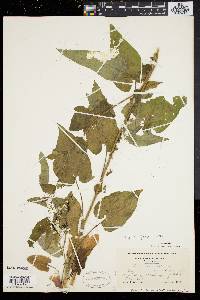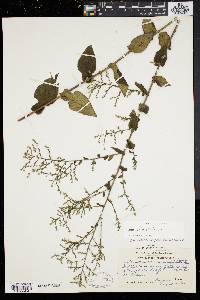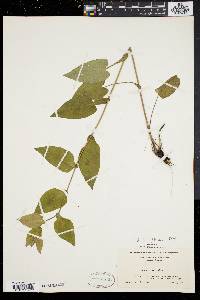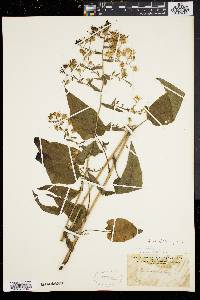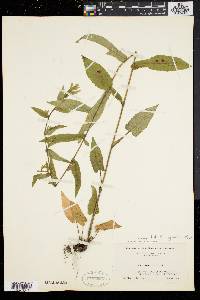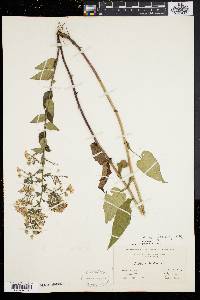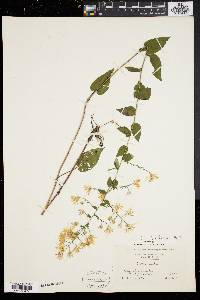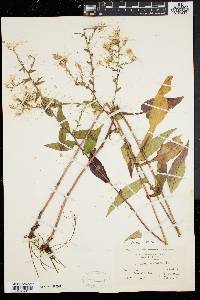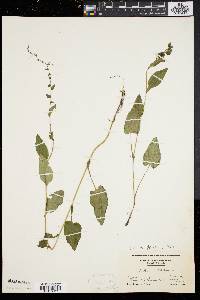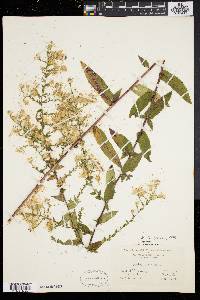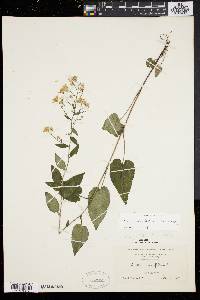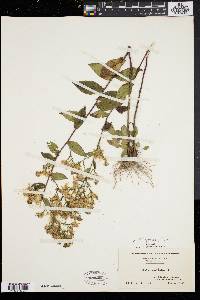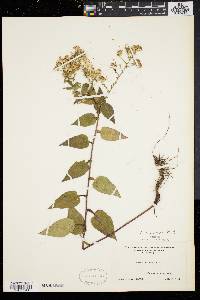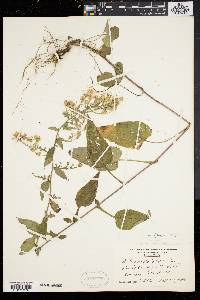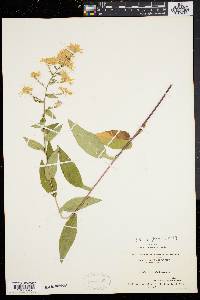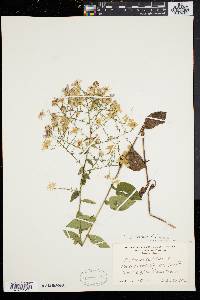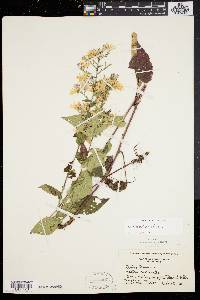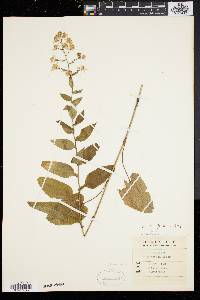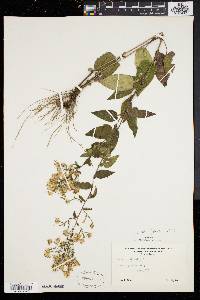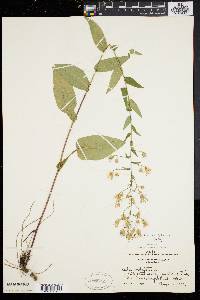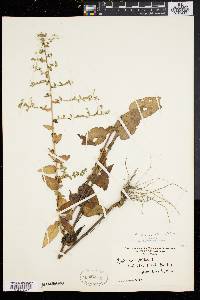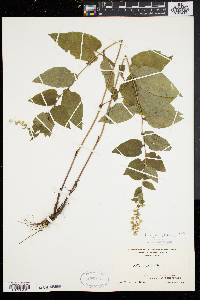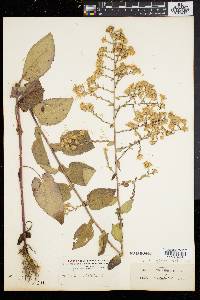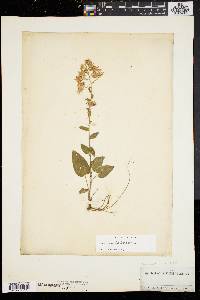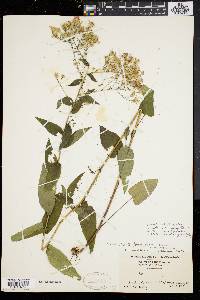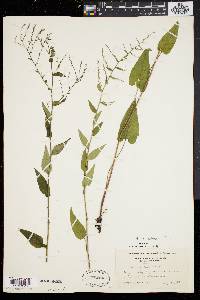Symphyotrichum undulatum
|
Symphyotrichum undulatum (L.) G. L. Nesom
 (redirected from: Aster undulatus var. loriformis Burgess) (redirected from: Aster undulatus var. loriformis Burgess) |
|
|
Family: Asteraceae
Wavy-Leaf American-Aster
[Aster baldwinii, moreAster undulatus L., Aster undulatus var. abruptifolius , Aster undulatus var. asperulus Alph. Wood, Aster undulatus var. diversifolius (Michx.) A. Gray, Aster undulatus var. loriformis Burgess, Aster undulatus var. triangularis Burgess, Aster undulatus var. undulatus L.] |
Perennials, 30-160 cm, cespitose; short-rhizomatous or with branched, woody caudices. Stems 1-3+, erect (straight, brittle), hirtellous to glabrescent proximally to densely hirtellous distally. Leaves thin, margins scabrous, abaxial faces hirtellous, densely so on midveins, adaxial usually scabrous, sometimes strigose or hirsute, rarely glabrate; basal withering by flowering (sometimes new winter rosette developing), petiolate (petioles purplish, narrowly winged, bases dilated and sheathing, hirsute), blades oblong-ovate or ovate to widely ovate, (10-)35-60(-140) × (10-)15-70 mm, bases usually cordate or subcordate to rounded, sometimes attenuate, margins shallowly crenate-serrate to subentire, apices obtuse or rounded, mucronulate; proximalmost cauline withering by flowering, proximal persistent, winged-petiolate, distally more widely winged or ± sessile, wings widening abruptly at strongly auriculate-clasping petiolar bases, blades ovate to lanceolate, 30-120(-140) × (10-)20-50 mm, reduced distally, bases cordate- or auriculate-clasping (sessile), margins crenate-serrate or entire, apices acute or acuminate, mucronate; distal sessile, blades lance-ovate to oblong or lanceolate to linear-lanceolate, sometimes pandurate (branch leaves ovate to lanceolate, sharply smaller), 4-100 × 0.5-26 mm, reduced distally, bases ± clasping, sheathing, margins serrulate or entire, apices acute or acuminate to long-acuminate. Heads in open, narrow to wide paniculiform arrays, branches widely spreading, divaricate to ascending, sometimes secund, ± densely leafy. Peduncles well developed, 0.3-3(-5) cm, branches to 10 cm, spreading, bracteate, densely hirtellous to strigillose, bracts 3-10+, firm, appressed, subulate (2-3 mm), grading into phyllaries. Involucres campanulate to cylindro-campanulate, 3.8-5.5 mm. Phyllaries in 4-5(-6) series, appressed or outer spreading, oblong-lanceolate (outer) to linear-oblanceolate (inner) or linear (innermost), strongly unequal, bases indurate 1 / 2 - 2 / 3 , margins scarious, erose, hyaline, ciliolate, green zones diamond-shaped to lanceolate, apices acute to acuminate or obtuse, often ± involute, often mucronulate, sometimes tips purplish, abaxial faces hirsutulous, adaxial sparsely so distally. Ray florets 12-16(-25); corollas usually blue to purple, sometimes lilac, laminae 6-12 × 1.4-2.5 mm. Disc florets 15-22(-25); corollas cream or light yellow be Flowering Aug-Oct. Dry or well-drained, loamy or rocky soils, open decidous woods, borders, clearings, dry hammocks, sandhills, open-wooded bluffs underlain by sandstone or limestone; 200-1500 m; N.S., Ont.; Ala. , Conn., Del., D.C., Fla., Ga., Ill., Ind., Ky., La., Maine, Md., Mass., Miss., N.H., N.J., N.Y., N.C., Ohio, Pa., R.I., S.C., Tenn., Vt., Va., W.Va. Symphyotrichum undulatum is of conservation concern in Illinois and Nova Scotia. Hybridization with S. drummondii and S. oolentangiense has been by reported by A. G. Jones (1989), but some specimens so annotated represent phenotypic variation of S. undulatum. Symphyotrichum undulatum is sometimes confused with members of the S. patens complex due to its auriculate-clasping, more or less pandurifom cauline leaves.
Plants with a branched caudex or short rhizomes; stem 3-12 dm, densely pubescent with short, spreading hairs, varying to subglabrous below the infl; lvs entire or toothed, scabrous to glabrous above, usually shortly and rather loosely hairy beneath, at least the lower ones cordate or subcordate at base and petioled, lance-ovate to ovate, 3.5-14 נ1.5-7 cm, those above extremely variable in size and shape, but always at least some of them either sessile and cordate-clasping or with the petiole enlarged and auriculate-clasping at base; infl open, paniculiform, the branches and mostly well developed peduncles ±spreading and bracteate; invol 4-7 mm, usually minutely puberulent, its bracts imbricate, sharply acute or acuminate, sometimes very slender, more often a little wider as in no. 32 [Aster drummondii Lindl.], often minutely purple-tipped; rays 10-20, blue or lilac; achenes minutely hairy, at least above; 2n=?18, 32, ?36. Mostly in dry, open woods and clearings; Me. to Fla., w. to O., se. Ind., e. Tenn. and c. Miss., and se. La. (A. claviger; A. corrigiatus; A. gracilescens; A. loriformis; A. sylvestris; A. triangularis; A. truellius) Gleason, Henry A. & Cronquist, Arthur J. 1991. Manual of vascular plants of northeastern United States and adjacent Canada. lxxv + 910 pp. ©The New York Botanical Garden. All rights reserved. Used by permission. From Flora of Indiana (1940) by Charles C. Deam A rare aster found on the crests of high, open ridges and on high, wooded banks. It has been reported from five other counties besides those indicated on the map, but I have seen no specimens to verify these reports. My experience indicates that it is very local. …… Indiana Coefficient of Conservatism: C = 7 Wetland Indicator Status: N/A |
